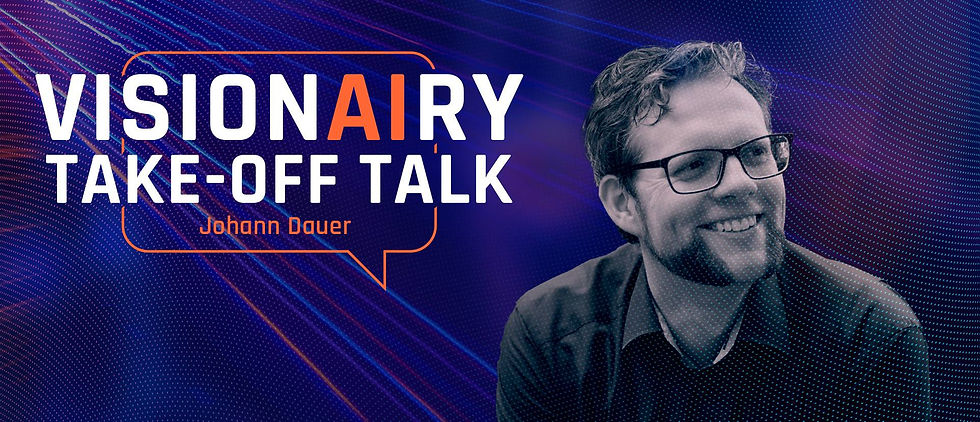VISIONAIRY® EXPERT TALK with Jörg Schamuhn, UAV DACH e.V.
- janhartmann6
- Dec 12, 2023
- 3 min read

In the VISIONAIRY® Expert Talk, we talk to one of the pioneers of unmanned aviation in Germany, Jörg Schamuhn, about the potential, technical issues and new markets for AI-based software solutions such as Safe Precision Landing:
1) Mr Schamuhn, as the founder of Airial Robotics and a board member of the UAV DACH Association, you are a pioneer and proven expert in unmanned aviation in Germany. How important are computer vision algorithms for unmanned BVLOS flights?
In my opinion, this technical solution is a fundamental building block for eliminating a major shortcoming in the execution of BVLOS flights. Computer vision algorithms can make a significant contribution to solving the operator’s situational awareness in BVLOS scenarios, which should be guaranteed by the pilot’s eyes in man-carrying flying under VFR. In addition, redundancies in navigation, for example, can be realised through the capability of visual-based navigation.
2) Spleenlab is breaking new ground with the AI-based precision landing method VISIONAIRY® Safe Precision Landing to realise fully automated parcel delivery by drone in the USA. In your opinion, when can we expect to see the first parcel deliveries by drone in Germany?
I can only answer that with difficulty. There are some companies in our industry that are also working on this topic in the German market. I can only hope that they don’t lose their drive, that the authorities play along and that this drone delivery capability is realised here. I would like to emphasise that I don’t see the focus as being on the delivery of sweets from discounters, but would like to see delivery services for critical goods, such as medicines or spare parts, gain acceptance and become established.
3) With new technologies such as GPS denied, Detect&Avoid and Surveillance, Spleenlab offers a wide range of software products for the UAV sector. In your opinion, what future applications and markets will arise from these diverse applications?
We are in close contact with Spleenlab and are pleased to see that these capabilities can be offered through this innovative approach. I see this as a modular system that enables us and the operators to carry out automated drone missions monitored from a control centre with a high safety factor. The technologies enable the realisation of safety-relevant redundancies, increased situational awareness and cooperative drone behaviour, even with uncooperative, man-carrying air traffic.
4) The UAV DACH Association, of which you are a member, has been campaigning for years for the regulation of autonomous flying with the „European Drone Forum“ format. When can we expect to see official regulations at European level at the earliest?
First of all, I would like to say that we are not necessarily talking about autonomous flight operations. Autonomy, as flight operations controlled purely by machines, seems unrealistic, especially in civil aviation. That is why our association is in favour of sensible rules for automated flight operations of unmanned aircraft systems that are monitored by operators. It is important for us to introduce a safe and regulated coexistence of manned and unmanned aviation that gives the unmanned sector enough space to enable commercial operations. When will that be? I think soon. I am optimistic here, especially because I have observed that EASA is working hard with us to find clear solutions.
5) Finally, I would like to offer a brief outlook. How will unmanned aviation develop in Germany over the next few years? What trends are already recognisable?
I am positive about the future when all stakeholders recognise that our industry makes sense for a safer and better community. I expect EASA to continue to work at a fast pace with all stakeholders on sensible regulations to accelerate our industry. I hope that government initiatives will move at a similar pace to make authorisation procedures workable. And I expect that manufacturers and operators, taking into account non-negotiable safety criteria, will implement applications that lead to real added value in society, thereby allaying fears of automated drone flights and increasing acceptance. Many possible application scenarios should help to reduce traffic congestion, speed up response services, make airborne operations more effective and make a significant contribution to the decarbonisation of aviation.


